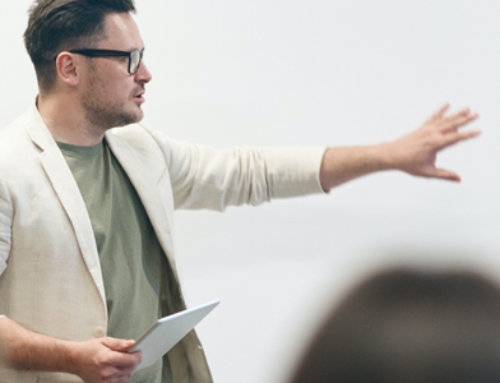 Do you ever wonder where that term “less is more” comes from?
Do you ever wonder where that term “less is more” comes from?
Many people think that Ludwig Mies van der Rohe, one of the founders of the modern architectural movement was the first to use it. Actually it was the English poet Robert Browning, who wrote this in 1855. Regardless of the origination, what can be applied to architecture or poetry can and should be applied to our work as educators.
Everywhere you turn a new strategy is being suggested or a new tech tool is popping up. You may be asking yourself…Where does it end? How do I keep it all together? How do I keep a balance? How do I know that I’m providing the best support to my students?
So…how do we hold it all together? How do we ensure that we are bringing our best to our course, without losing it? We do it, by remembering that “less is more”.
1) Plan your online course, be focus
Prepare your online lessons with a short talk (a video clip not more than 15 minutes) to introduce the key points of the lesson. On the same page below the video clip, list the key points raised (not more than 300 words) in the video. Follow it with the lesson notes (Keep it short – 1000 words) providing brief expansion on the lesson topics. For each of these topic you can recommend additional reading (either from the course text book or/and hyperlink to a relevant article on the web). Finish the lesson with an assignment. Use the assignment both as teaching and testing your students.
2) Use the course assignment as a teaching tool
Take the time to review the lesson content for the entire course. Instead of examining all that content separately, incorporate an ongoing story (Case study) going through your lessons. Use your creativity and combine lesson content with the course activities (case study). It will help the flow of lessons much better. Instead of thinking of individual test/assignment for each lesson, think of a story (case study) running through your course. You can embed further learning material in the body of case study.
3) Pick one tech tool and use it well
There are amazing tools on the web. Some of you are eager to embrace as many of these tools as possible and many of you may be put off by the amount of technology involved. Going to workshops, learning how to use them and forgetting why you thought, that was a good idea in the first place. STOP! In the rush to use a wiki, blog or social media site with your students, it’s easy to lose the site of the big picture. What’s MORE important is to see the power of what one tool can do to make a difference in your work and learn how to use that tool well. Maybe it’s starting a blog and using that to support your course. Whatever the tool, choose to use one and using it well.
As an educator, I share these three suggestions because it’s easy in our daily work as educators, to get caught up with all the content and lose the meaning. Remember it’s the quality not the quantity of your lesson that makes the difference.




